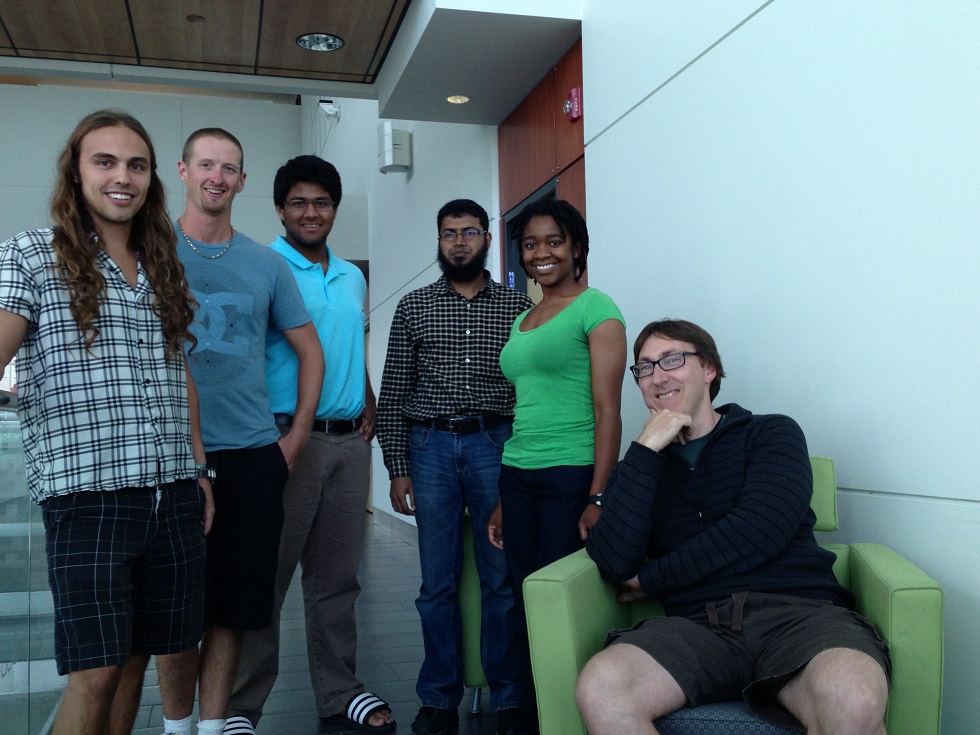

 Professor
Professor|
Course outlines: Chem105 , General Chemistry II Chem250 , Physical Chemistry I Chem251 , Physical Chemistry II Chem360 , Quantum Chemistry Chem360 Test 1 stuff Chem360 Test 2 stuff Chem360 exam stuff Chem461 , Computational Chemistry Chem857AH , Ionic Solutions Chem461 estrogen nmr Chem867 , Advanced Theoretical Chemistry |
Research group: group photos Conference ideas VASP tips DigitalAlliance tips G09 on Dextrose bsub tips |
Personal: arctic soccer austria italy |


Solving Challenging Problems with Theoretical Chemistry
|
Our research interests lie in the application of quantum chemistry
methods and theoretical chemistry to solve challenging problems
and long-standing mysteries in chemistry. |
|
Recent breakthroughs. We have been focusing on several research projects that involve the chemistry of ions. We have made recent breakthroughs in (i) discovering changes in chemical mechanism with external mechanochemical force (papers 71 and 74), (ii) curing errors in acid-catalysis computations (papers 69 and 76), and (iii) explaining poor conductivity of ionic liquids made from carboxylic acids (papers 70,75,79,81). |
|
Ionic conductivity. We discovered, in 2012, a Grotthuss conductivity mechanism involving hopping halide ions, rather than hopping H+ ions. There is an associated activation energy, Ea, for Grotthuss conductivity, which rises during thermal expansion, and this is the reason for conductivity maxima versus temperature. This affects both network (BiCl3) and molecular (HgBr2) melts, and we are currently extending this study to more molten salts. In ionic liquids (molten salts with lower melting points), many have partial ionic character, with maximum conductivity at odd mixing ratios; we have uncovered effects due to dielectric constant and ion-pairing equilibria, both of which are affected by mixing ratio. In such systems, the conductivity mechanism appears to be translation of ion complexes, not Grotthuss H+ hopping, in our simulations; research eagerly continues in this new research direction. |
|
Ion chemistry: petroleum refining, acid catalysis, etc. Acidic ionic liquids could replace zeolites as a material of choice in petroleum cracking, and we study the chemistry of both. While ionic liquids offer a substantial lowering of energy input (can crack at much lower temperatures), product selectivity is lost, and a hybrid technology is desired. Currently we are solving the difficult problem of zeolite modelling. Acid catalysis of many organic reactions has been difficult to model because of large errors in traditional quantum chemistry calculations. We discovered that the problem is almost entirely to do with the modelling of H3O+ ions, and are leading the world in applying semicontinuum modelling to such problems. |
|
Gas-phase dimers and excimers. We have expertise in the computational prediction of structure and IR/UV spectra of weakly-bound gas-phase dimers, such as (NO)2, (NNO)2, and naphthalene dimer. We are open to assist experimentalists in projects of this kind. |